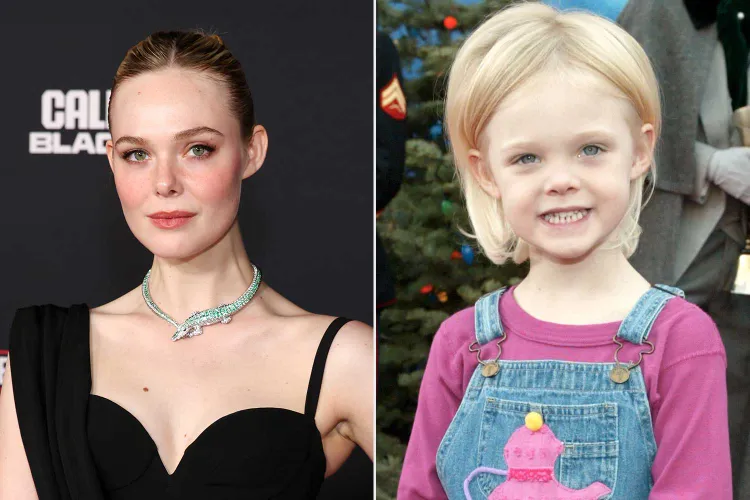From Red Carpet to Elephants: Elle Fanning Looks Back on the Over-the-Top Childhood Premieres That Shaped Her Love of Fashion and Film
When Elle Fanning paused to reflect on her childhood in Hollywood, she offered more than just a glimpse into her upbringing. She described an era when studios treated kids’ movie premieres like circuses on the red carpet: “There were elephants and it was crazy,” she said, recalling events she attended with her sister Dakota Fanning in the early 2000s.
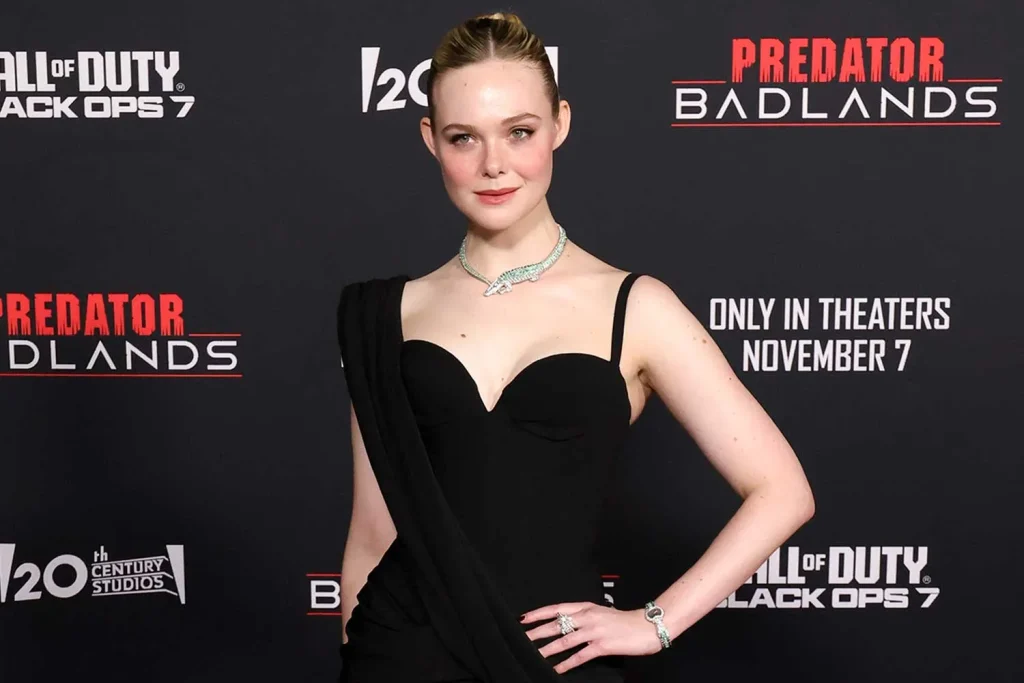
Now 27-years-old and starring in the latest installment of the Predator franchise, Predator: Badlands, Fanning cast her mind back to a time when extravagance and fantasy ruled the premieres designed for children. The glitz was real, the gowns were real, the elephants were real—and she walked it. She remembers picking out a little outfit, walking the red carpet, and feeling part of something magical. “I’ve always loved fashion,” she said. “So … I loved the kids’ premieres of the early 2000s.”
Her memories capture something rare in Hollywood today: a moment when children were not just extras at premieres, but center stage. Studios outfitted these events with rides, animals, bright colors, and larger-than-life props—all to make the movie premiere an immersive party for the youngest guests. Fanning’s recollections are vivid. “Like, [they were] amazing,” she said in her interview with People.
Growing up in the industry, Fanning has been around these lights since she was very young. Her sister Dakota opened doors for both of them, and Elle followed with a string of roles that moved her beyond just child-star territory. But these early, dazzling events left an impression beyond her film career. They helped shape her sense of style, her awareness of spectacle, and her understanding of the business of film. She described walking a red carpet in a mini dress reserved for a kids’ premiere, feeling like the event was custom-made for her. For a child actor, such experiences offer both fun and responsibility: an invitation into an adult world, but also a stage of your own.
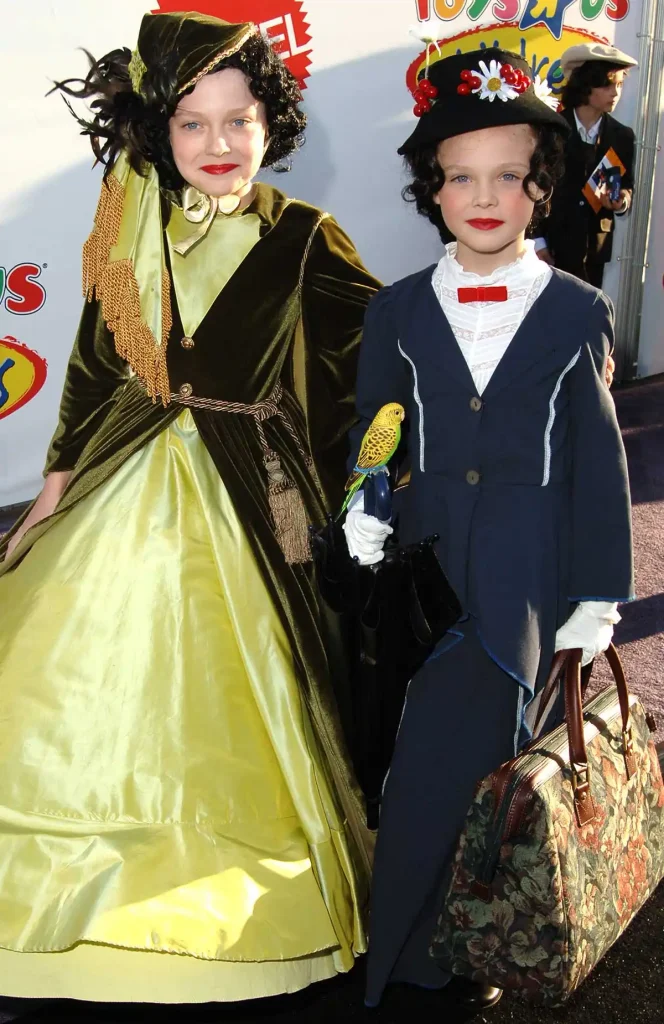
Fanning’s nostalgia is gentle but also reflective. She does not romanticize the industry, but she acknowledges the fun of those early days. In the conversation, she touched on the lavish nature of those events—how they helped fuel her passion for fashion and performance. She recalled choosing her outfit, walking down a carpet that glowed, and seeing the cameras flash. She said it with lightness—but the memory is etched clearly. It is a rare window into how childhood meets Hollywood, where play and production merge.
Today, Fanning is front and center in Predator: Badlands, in which she plays two androids, Thia and Tessa. In the same interview, she described the film as the furthest set into the future of the Predator/Alien universe, and noted the dual role gave her a new kind of challenge: one that combines physical stunts, emotion, and humor. It is a reminder that childhood roles and glamorous premieres were only the beginning of her journey—and that the industry she grew up in has grown with her.
In describing those early premieres, Fanning also hints at how much the business has shifted. The kid-centric extravaganzas she remembers are less common now. Studios are more measured, maybe less whimsical, and the red carpet itself has changed. Yet for her, those moments were formative, infused with the kind of wonder that many children never experience. She paused over the memory of elephants and over-the-top displays, recognizing that those events were spectacular in their own right—but also entirely about performance: staging, spectacle, image. And as someone whose career has bridged child roles and adult complexity, she has absorbed the lesson.
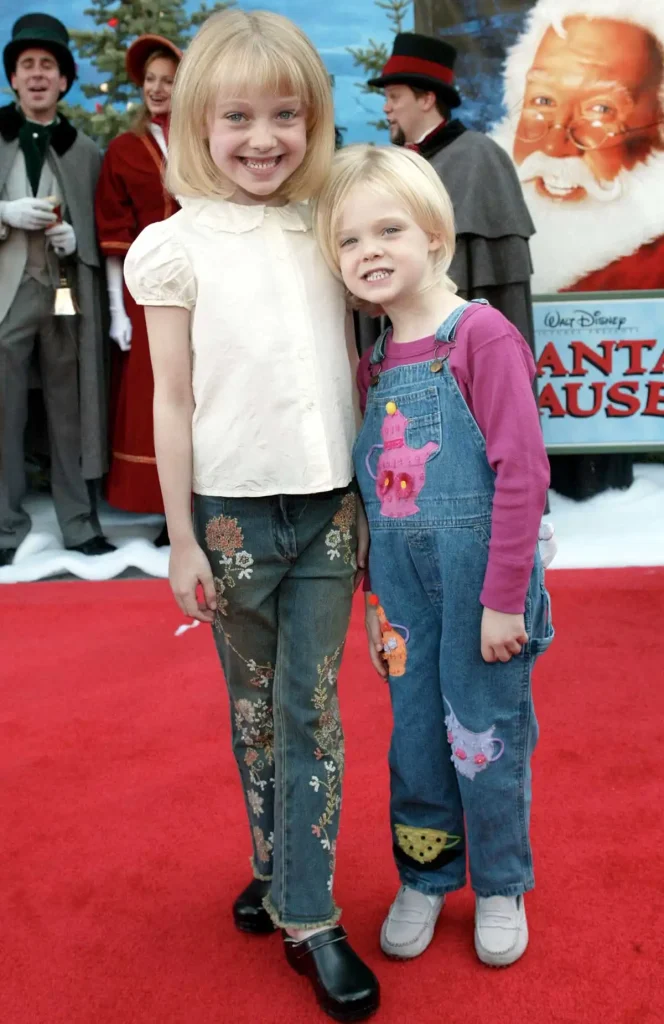
Beyond glamour, there is a deeper undercurrent to Fanning’s story. Her reflection speaks to how childhood in Hollywood works—not always perfect, not always easy, but also rich with moments that carry meaning. For Fanning it has meant balancing the life of a young girl with the demands of public visibility, choosing roles, defining identity, and staying grounded. When she mentions the early premieres she attended alongside Dakota, one senses the link between sisterhood, support, and shared memory. The red carpets were not just for fans—they were family.
Public memory often holds on to the images of child stars in dramatic or tragic arcs, but Fanning’s recollection is different. It exudes gratitude for the fun and for a family presence that kept her anchored. She did not shy away from the lights; she embraced them. She did not pretend those early experiences were easy; she acknowledged the glamour and oddity in equal measure. And she carried the joy of them into a career that continues to evolve.
The focus on those early events isn’t just nostalgic fluff; it offers insight into how Fanning views her path. When she says she “loved the kids’ premieres,” we hear a young girl who felt seen, who walked into adult spaces and found a place of her own. We hear a performer who absorbed the energy of spectacle and turned it into ambition, versatility, and self-expression. And we hear someone who now stands in front of a very different red carpet—one where the stakes are higher and the spotlight broader—but who still remembers the pink carpet of childhood that felt made just for her.
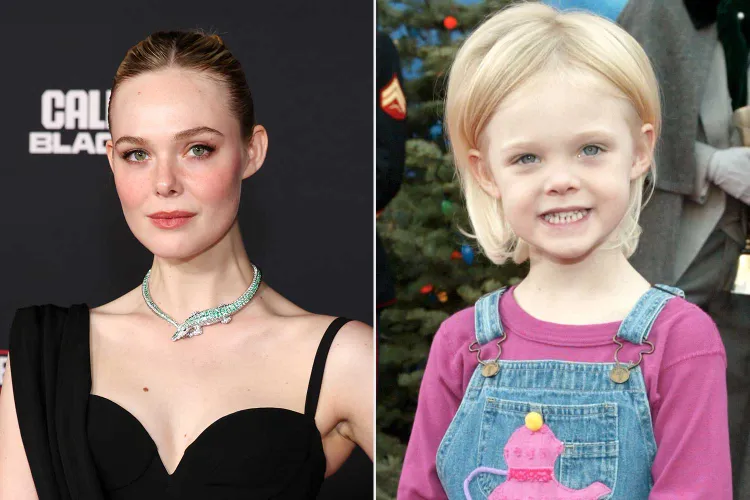
In sharing her story, Fanning invites us to a moment in Hollywood that feels almost lost: the time when studios built events around children with the same flourish they might build a blockbuster launch. The elephants, the costumes, the early morning glam squads—all of it seems more playful than strategic. Yet for these young attendees, it was formative, and for Fanning, those memories persist. They shaped her—not just as an actor, but as someone who sees film as more than roles and box office. She sees it as magic, of which she has been part since she could hold a mini dress.
Of course, the industry has always come with caution. For child actors, early exposure to fame and production can carry risks: identity issues, pressure, expectations. Fanning’s recollections do not gloss over this. They are tempered by her commitment to craft and by her family’s presence. Her career moves—from early roles to more nuanced projects—suggest a trajectory built on awareness, and that awareness has roots in childhood. The wonder of those early premieres lives on in her drive to take roles that surprise, challenge, and express.
When the lights dim and the applause ends, the memory of walking down that carpet as a little girl with her sister remains vivid for Fanning. “I’d get my little outfit ready and walk down [the red carpet].” She said that remembering was like flipping through an album. It wasn’t perfect, but it was hers. It was fun, it was strange, it was extraordinary—and it mattered. She looked back, not with longing, but with gratitude. For the dresses, the cameras, the elephants—and for what those moments taught her about herself.
As Predator: Badlands hits theaters, viewers might focus on the action, the special effects, the dual role. But somewhere behind the stunts and the future-tech façade is a young girl who once stood on a carpet built for kids, under lights arranged for their sake. That memory now lives in an adult actress who brings depth, ambition, and groundedness to her work. The child-star fancy of elephants and over-the-top parties wasn’t the whole story—but it was the first chapter. And Elle Fanning carries it with her.
